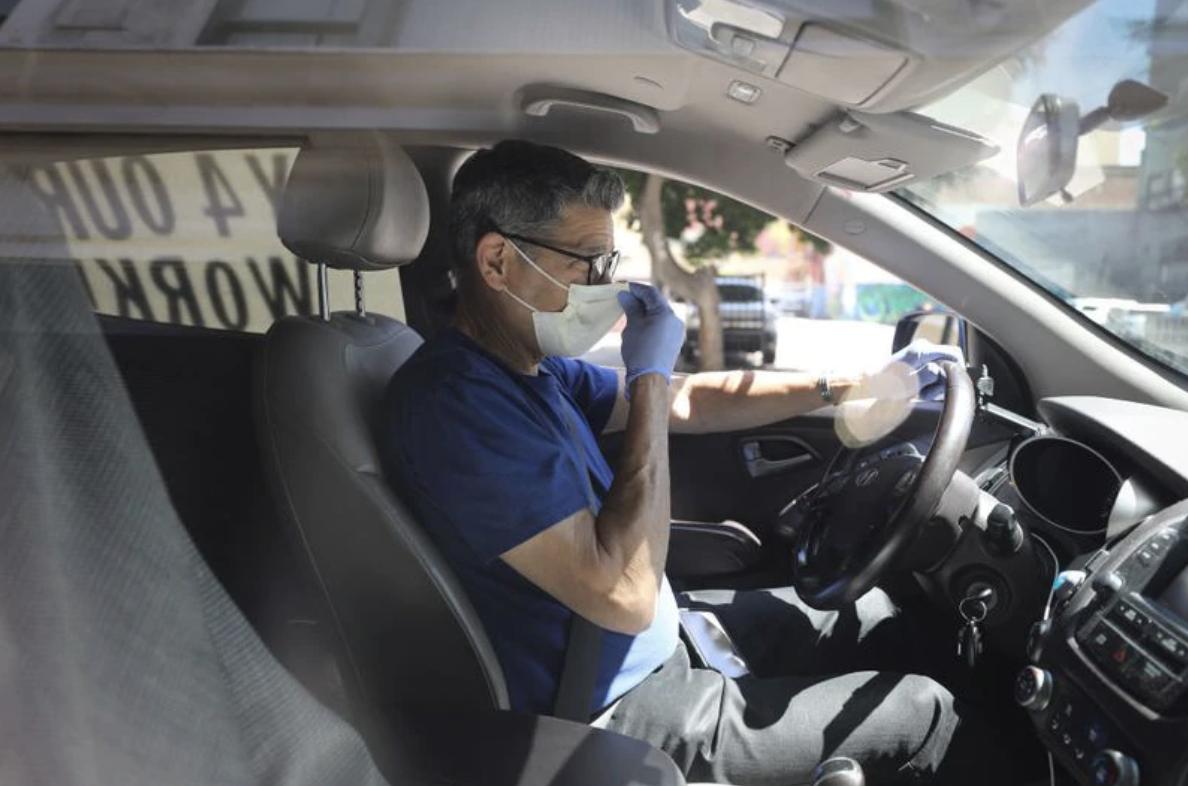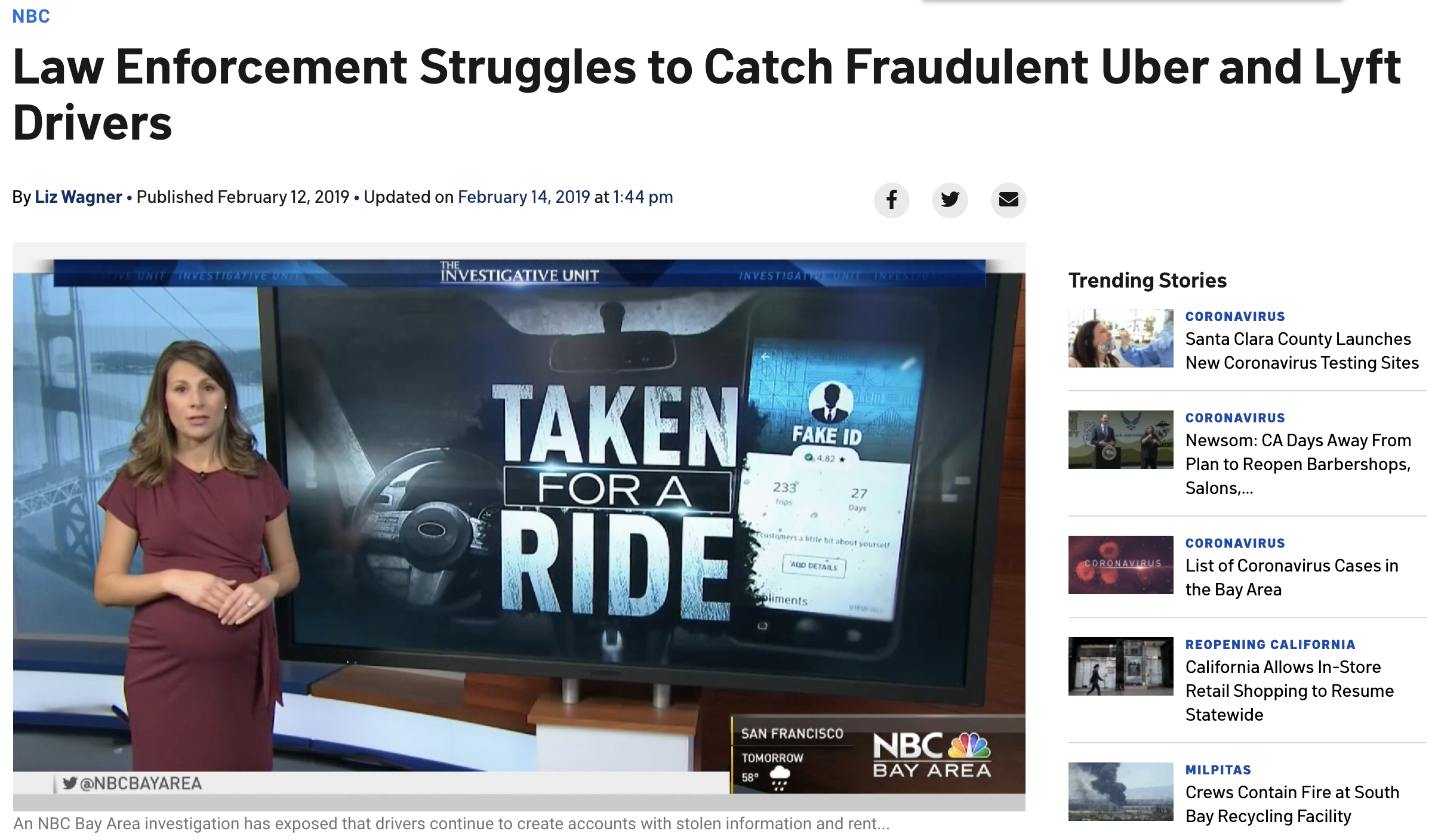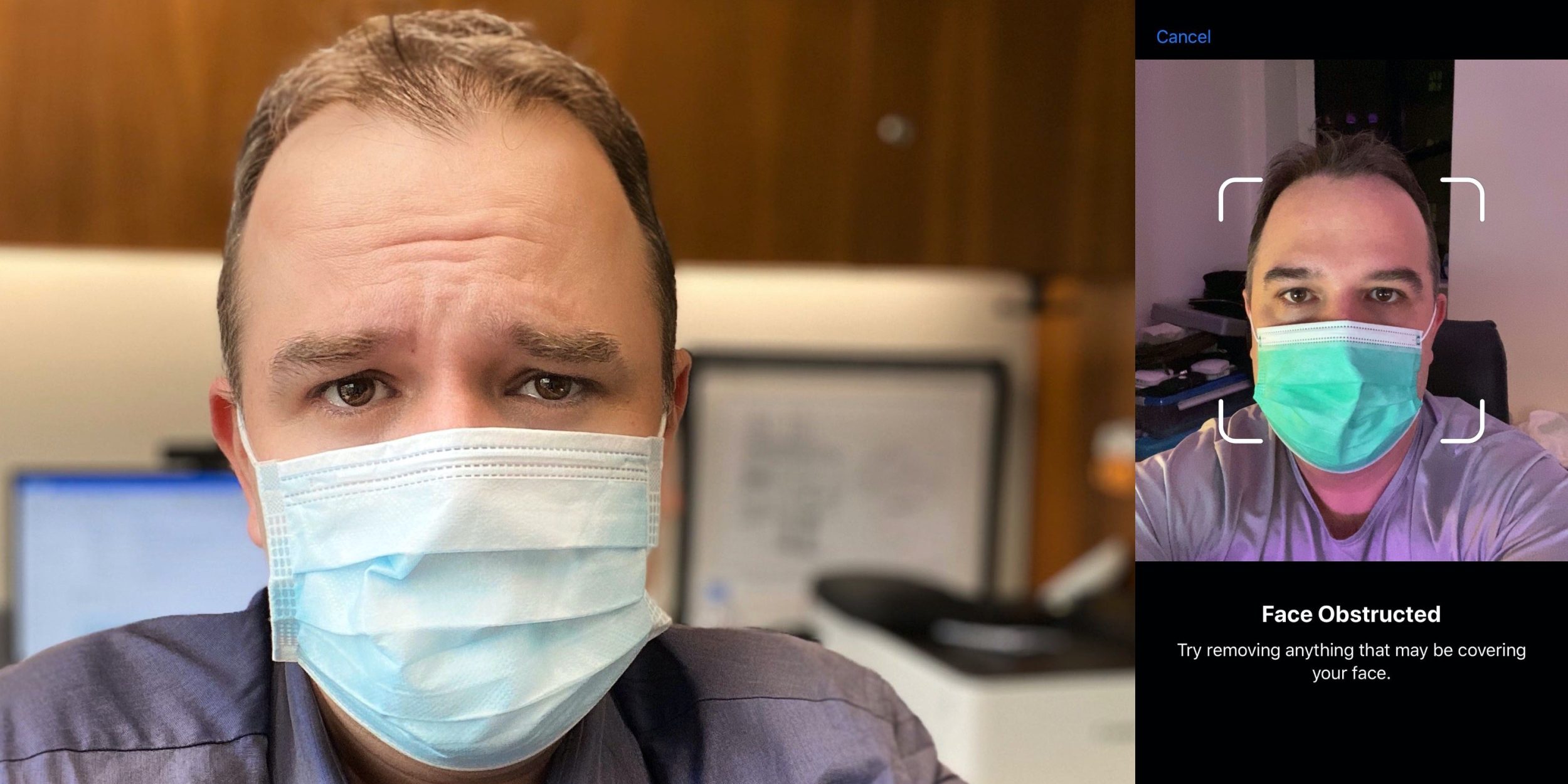The COVID-19 crisis has been hard for everyone, reopening businesses in a pandemic could be even harder, especially for mobility services such as rideshare, on-demand delivery.
Protecting the Driver is the Key for Reopening Mobility Services

As the top priority suggested by public health authorities for reopening mobility businesses, comprehensive sanitation will not only help protect the driver's health but also the rider and/or delivery customer. For example, Uber allocated $50 million for purchasing and equipping PPE for drivers and delivery people globally. On-demand delivery companies such as DoorDash and GrubHub have stockpiled sanitizers and gloves for protecting their drivers.
However, the efficacy of the protection all relies on an assumption --- the driver is the account holder. If the person behind the wheel is not the legitimate driver, all protection methods will be voided because: (1) the impersonating driver will not follow the sanitation policies, and (2) it would be impossible to trace the infection cases. The question is: what is a fake driver and how severe is this problem in practice?
The Notorious Fake ("Ghost") Driver Problem
There are two types of fake drivers, namely, the impostor and the predator. Here, imposters are drivers who use hacked accounts to take victims' order; whereas in predator attack, the fake driver (may not even have a account) simply approaches, e.g., trolling around late-night bars, to careless passengers to commit crime.

Both impostor and predator attack allow the driver to bypass the background check, commonly enforced by a one-time verification of legal documents (e.g., driver’s license, criminal records) before taking driving jobs. Such an impersonating/fake driver has been impossible to trace.

According to several recent investigation (NBC News 2018, NBC News 2019), a Uber account was created (with compromised personal information) 27 days prior has already logged 233 trips across the Bay Area. A 2018 CNN report found that 103 Uber drivers and 18 Lyft drivers had been accused of sexual assault or abuse.
The fake driver problem can cause not only economic harm (against the service) but also violent crimes like kidnap, rape, fraud, and robbery, to the users. During the pandemic, this problem case an unprecedented health threat to mobility services.
How the Traditional FaceID Fail in the Practice
As pioneers in fighting fake drivers, Uber and Lyft ask drivers to take selfies as a way to detect fraudulent drivers and/or criminals. Yet this strategy has technical limitations related to photo quality (e.g., insufficient lighting when taking a picture). This method may also fail in practice because it is not continuous; a fake driver could impersonate a legitimate driver between two check-ins.

With enforced face mask regulation, it will be a lot harder for faceID to work in practice.
It's time to Put an End to This Problem
By feeding the feature to a machine learning pipeline, DriverX can recognize mismatch to the driver’s behavioral pattern in real-time, thus achieving continuous authentication.
First and Second-factor Authentication

DriverX can help achieve first or second-factor authentication per the requirement of the mobility app. For the first-factor authentication, DriverX works as the stand-alone metric for checking driver's identity. For the second-factor authentication, if the driver's behavioral pattern does not match, DriverX can trigger another authentication arm, e.g., checking selfie, thus achieving more accurate yet usable driver authentication.
Contact Us to Learn More